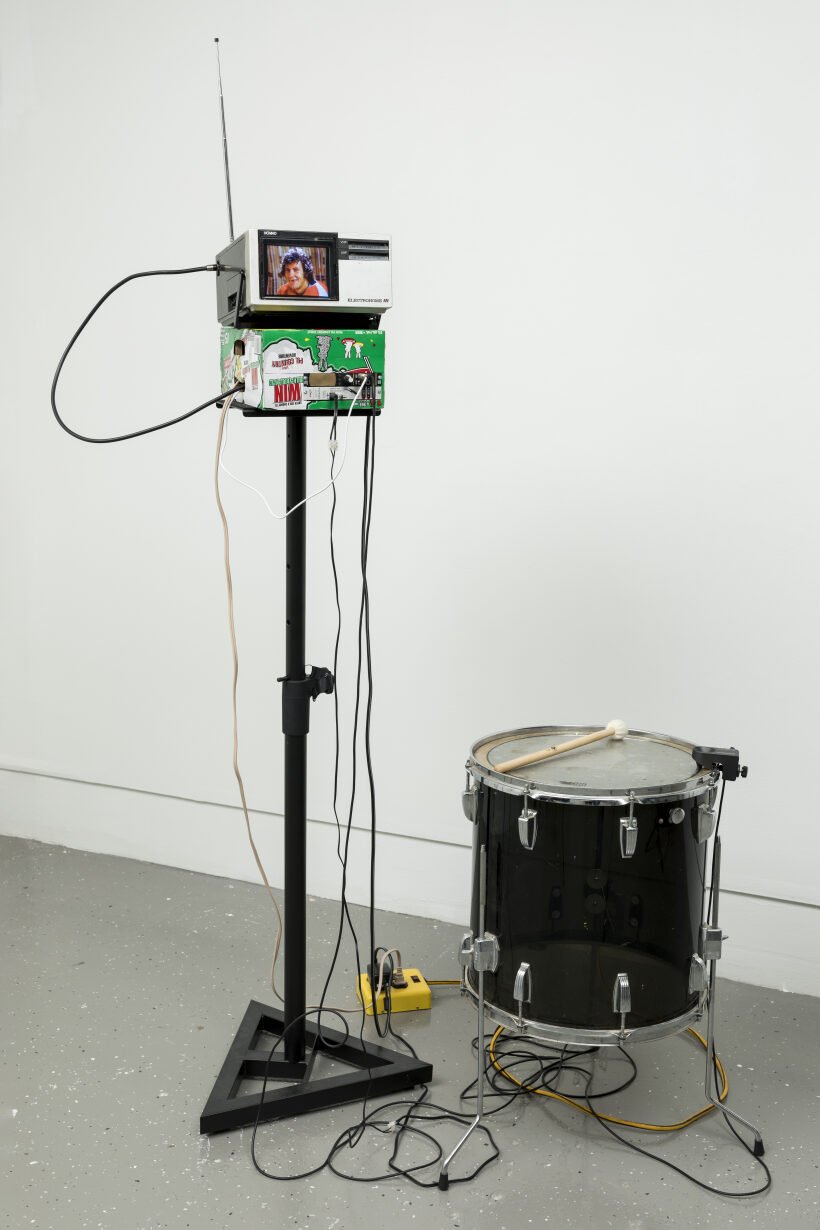BLUTO’S CAVE: ALLEGORY OF THE MAN CAVE
Patrick Lundeen
The Cube
January 13 to April 6, 2024
Curated by Craig Willms
Through Bluto’s Cave: Allegory of the Man Cave, Patrick Lundeen transforms The Cube into a man-cave that, rather than providing respite from reality, challenges the tropes of masculinity and manhood. Bluto is the consummate villain, bully, and the arch-nemesis of the cartoon and comic strip character Popeye the Sailor Man. In his video and sound installation, Lundeen reimagines Bluto as the malevolent mascot for the contemporary masculine archetype.
Playfully revealing the signifiers of this gendered space, which usually acts as an escape from duties and obligations, Lundeen proposes the man-cave as a socially constructed environment and repository or display space of stereotypical “guy’s stuff” that is mostly viewed but not actively used. The Bluto sculpture houses an embedded camera that takes the viewer in by way of an up-and-down male gaze that is then transmitted onto a television in the body of the sculpture. Here, Lundeen points the camera at our own gender biases and social habits as a way of creating bodily awareness. Other works are activated by motion sensors and interactions by the viewer that trigger a hard rock soundtrack and reels of hockey fights that poke fun at the stereotypical notions of “manning up.” The inference is that violence and aggression are the only ways men settle things. It is an attempt to separate the “real” men from everyone else. Real men are defined as the ones who don’t back down or compromise and uphold the status quo in the face of knowledge or change.
The sub-title references Plato’s Allegory of the Cave (c. 375 B.C.E) wherein Plato enacts a philosophical dialogue between Socrates and Glaucon about the human perception of the material world versus the lived experience of the world. It is an allegory that describes prisoners chained in a cave with their only perception of the outside world being played out in shadows cast within the walls of the cave. Should a prisoner escape and see the light and the material world outside the cave, it would be overwhelming due to the darkness and limited perspective experienced within the cave. After getting accustomed to the light, the prisoner can only then see and experience the realities of the material world and in turn realize his ignorance of the world from within the cave. After his experience, the challenge lies in returning to the cave to share knowledge that flies in the face of his fellow prisoners’ ingrained perceptions. Those remaining in the cave can choose to embrace this new perspective or live within their own comfortable ignorance. Plato’s allegory has been used in popular culture and cinema in such films as The Matrix, The Lego Movie, and Jordan Peele’s Us to illustrate sexism and bigotry, and to challenge perceptions of the world around us.
The current polarized political and social climate generates an increasing tendency to view the world only through one lens, justifying ignorance within an echo chamber. Like the prisoners in Plato’s allegory, embracing a willing ignorance in the face of outside perspectives limits a person’s world view. In his installation, Lundeen re-examines masculinity and reinvents the man-cave with humour and irony to point out the absurdity of social conventions, offering a shift in perspective.
Patrick Lundeen was born in Lethbridge, Alberta (Siksikaitsitapi [Blackfoot Confederacy] territory). He currently lives and works in Kelowna, BC (unceded Okanagan Syilx territory) where he teaches drawing, painting, and sculpture at UBC Okanagan University. His interdisciplinary artistic practice includes explorations of sound, video, music, food, performance, and public art. Lundeen’s visual strategies employ humour, sensory experience, and a rough and visceral aesthetic as a means to unpack social and political contexts.
Patrick Lundeen
The Goon Squad, 2023
mixed media
206 x 63.5 x 61 cm
Photo: Yuri Akuney















